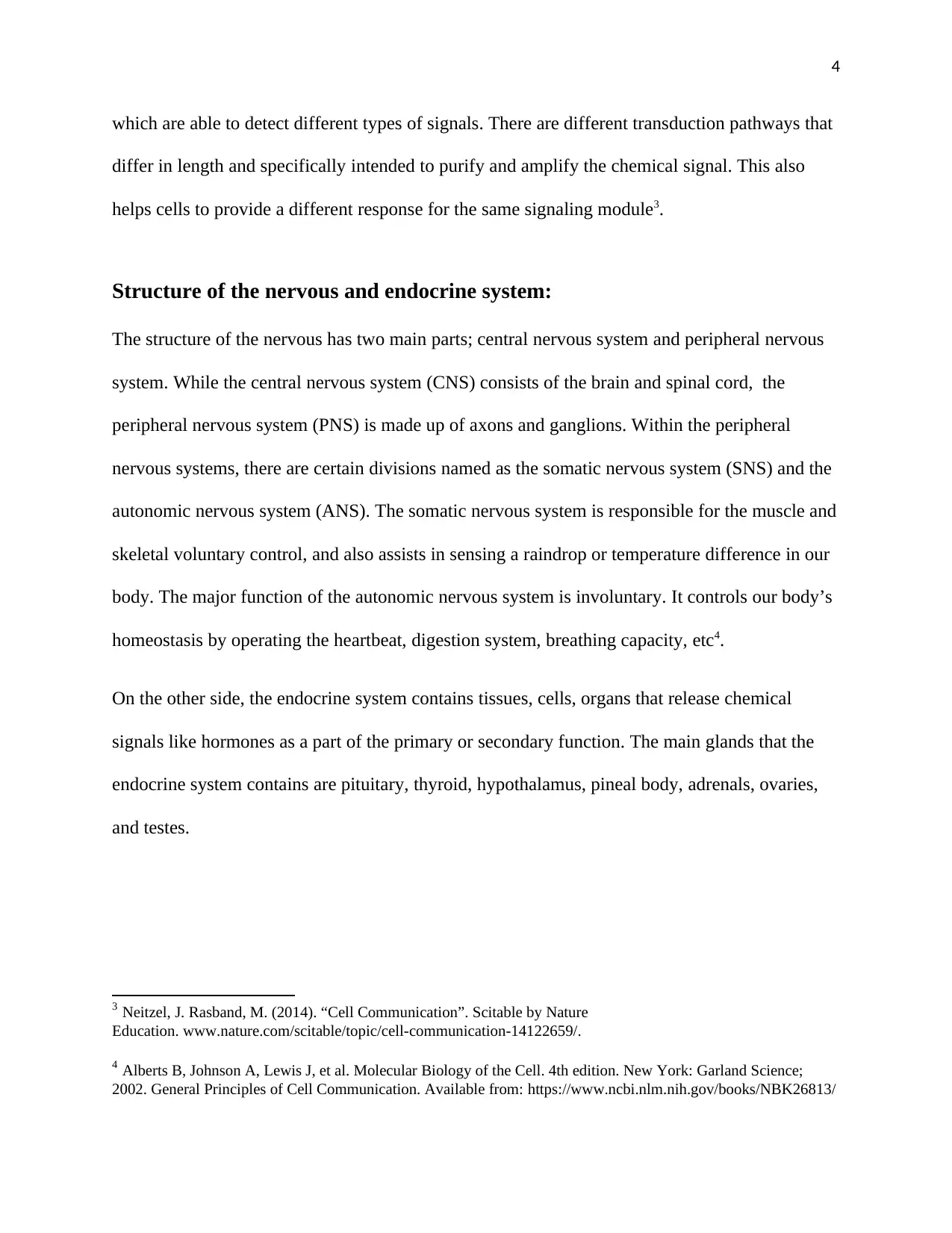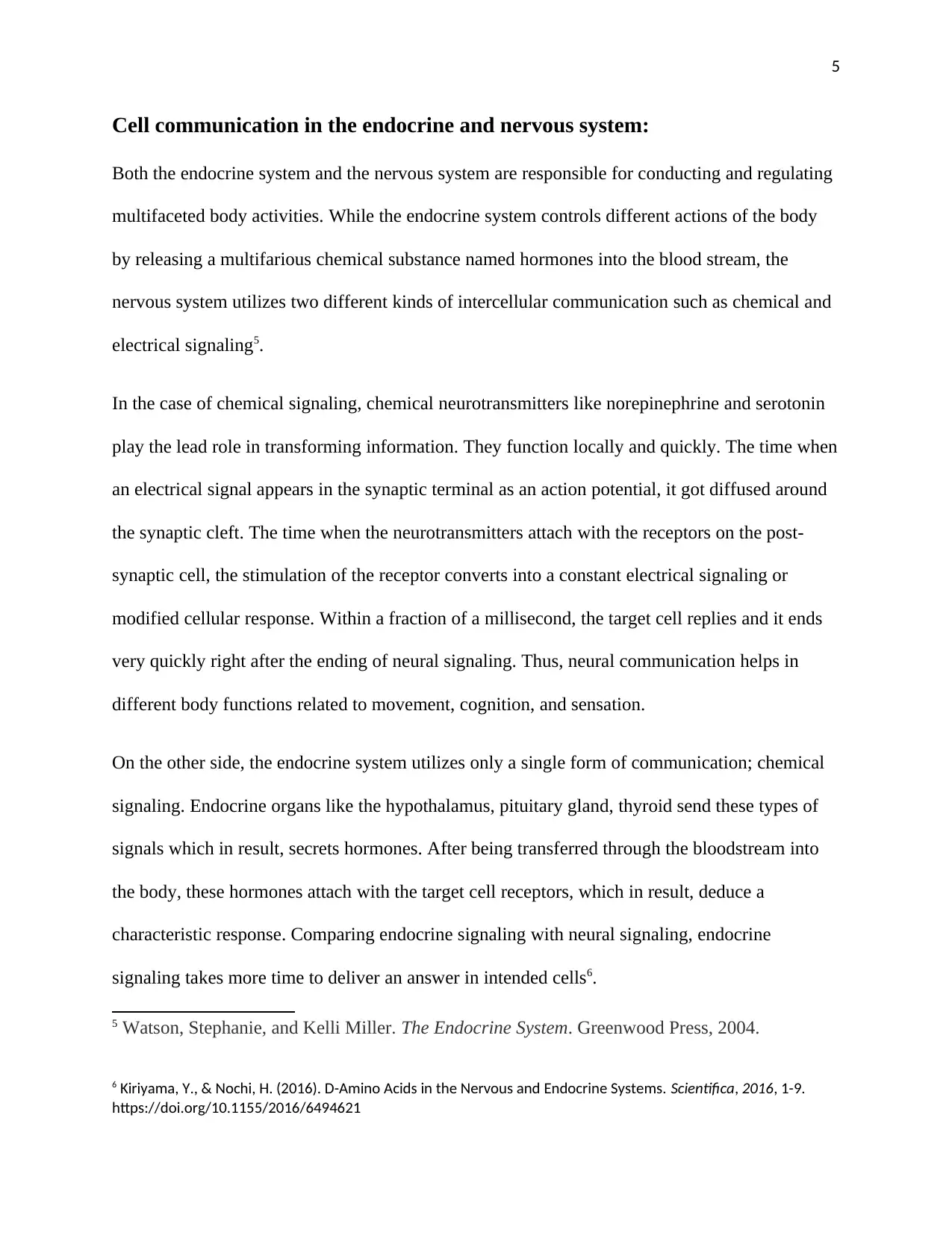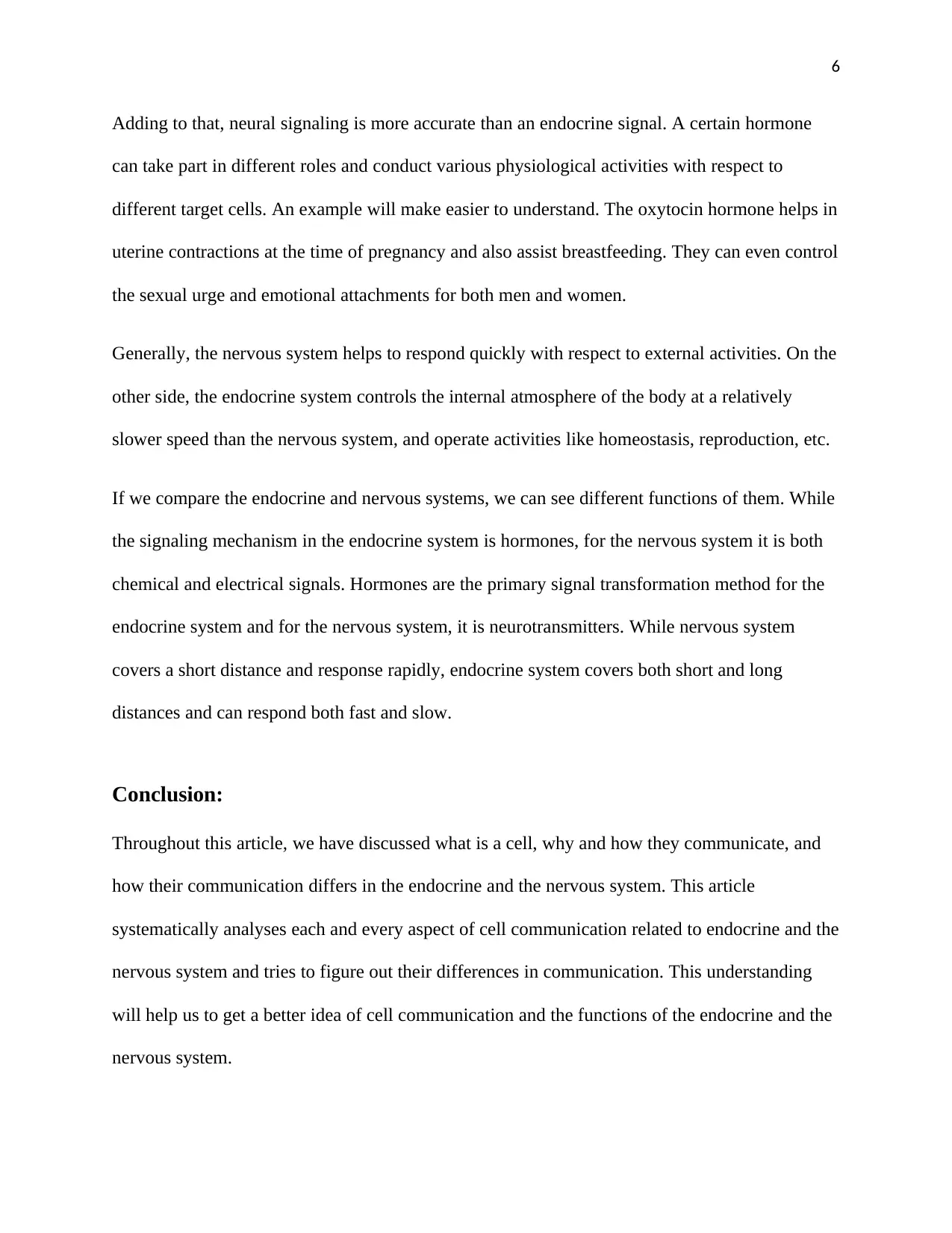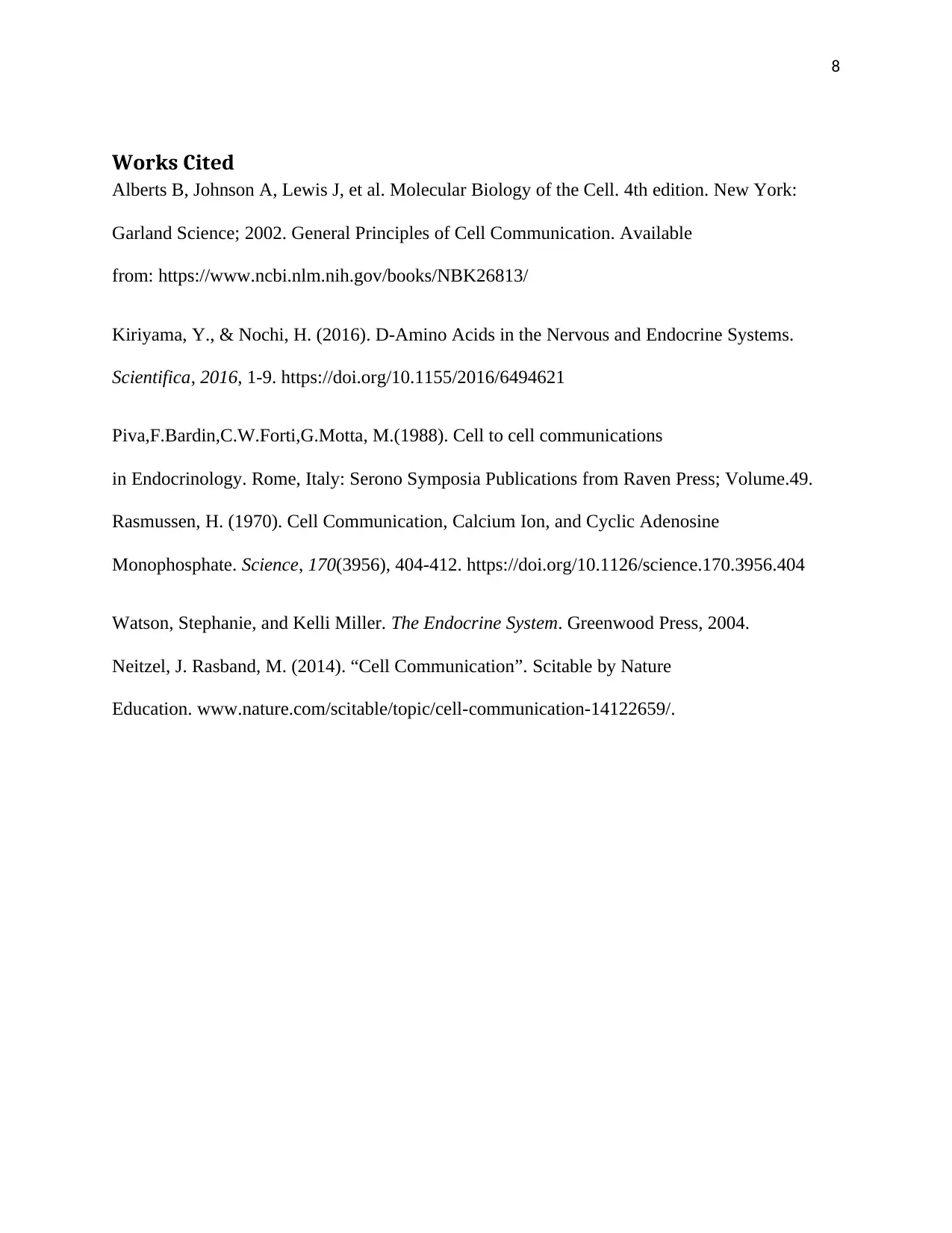Cell Communication in the Endocrine and Nervous Systems (BIO 203)
VerifiedAdded on 2022/08/12
|8
|1326
|48
Report
AI Summary
This report provides a comprehensive overview of cell communication, focusing on its mechanisms and functions within the endocrine and nervous systems. It begins with an introduction to cellular communication, explaining how cells use chemical signaling, such as hormones and neurotransmitters, to interact and respond to their environment. The report then delves into the structures of the nervous and endocrine systems, highlighting the central and peripheral nervous systems, as well as the key glands of the endocrine system. A detailed comparison of cell communication in both systems is presented, contrasting the use of chemical and electrical signaling in the nervous system with the exclusive use of chemical signaling in the endocrine system. The report explains how the endocrine system utilizes hormones transported through the bloodstream, while the nervous system employs neurotransmitters for rapid, localized communication. The discussion includes examples like the role of oxytocin and emphasizes the differences in response times and distances covered by each system. Finally, the report concludes by summarizing the key distinctions in signaling mechanisms, distances, and response times, providing a clear understanding of how these two systems work to regulate various bodily functions. The report is based on scholarly sources and is formatted as per the provided assignment brief.
1 out of 8













![[object Object]](/_next/static/media/star-bottom.7253800d.svg)